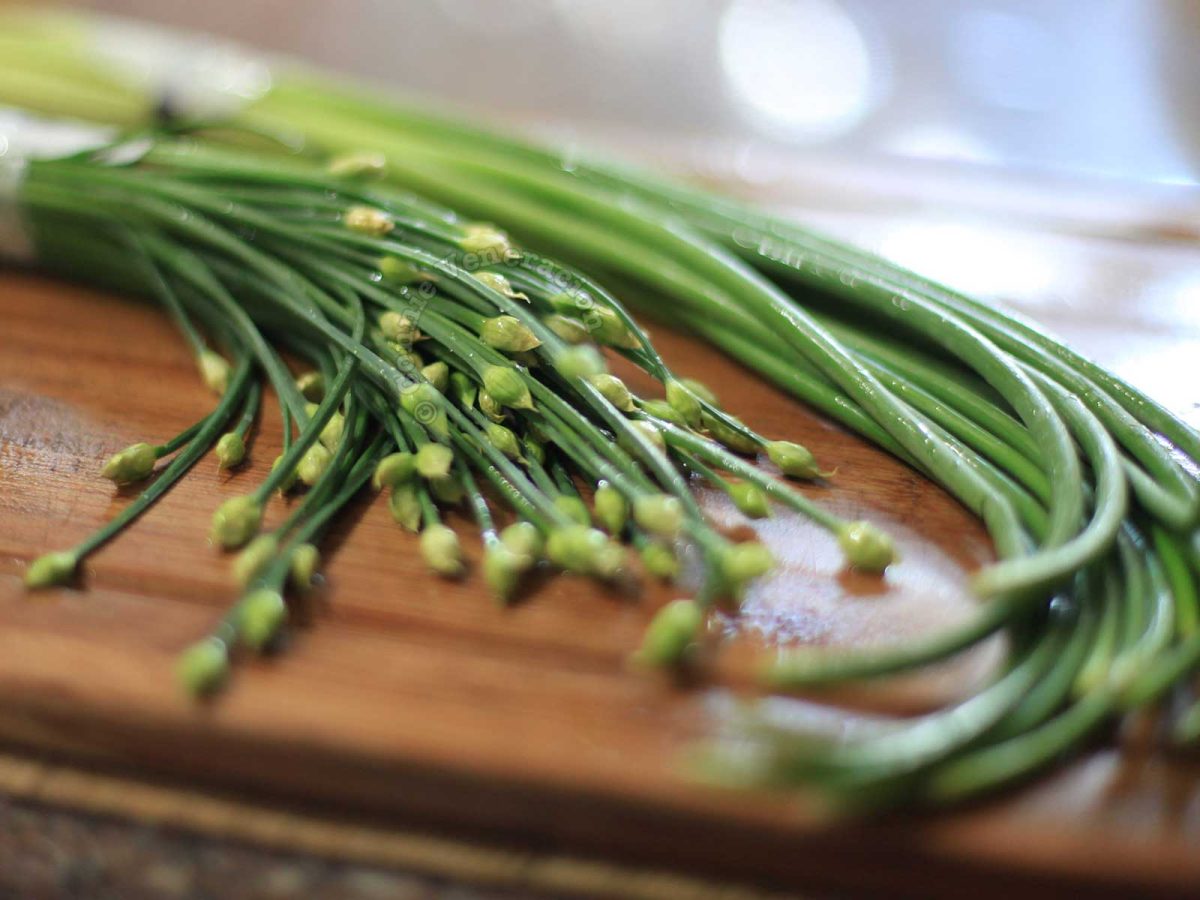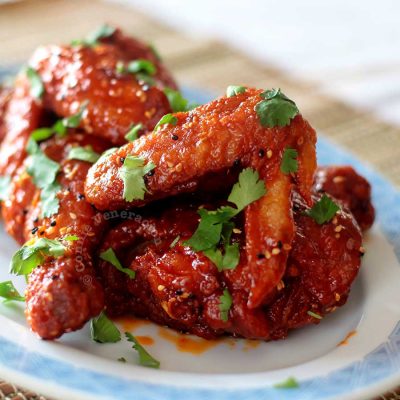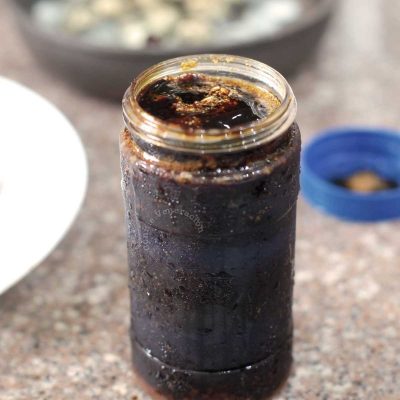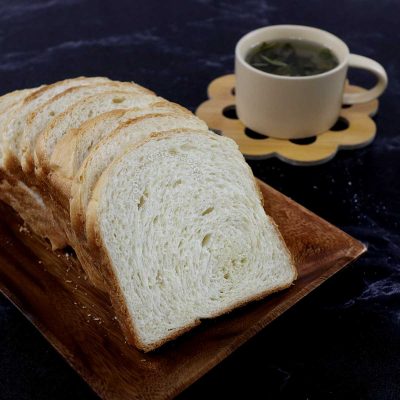If you’re confused, you’re not alone. Much of the confusion stems from the many different names by which these vegetables are designated depending on where you are in the world and what marketing techniques vegetable sellers use.
English names of garlic chives include Chinese chives and Chinese leeks
They are not the same as chives which has a flavor more similar to onion. Garlic chives taste more like garlic than onion. The scientific name is Allium tuberosum and there are several varieties. In Western culture, they are mostly grown as ornamental plants. In Asia, garlic chives are grown as food.
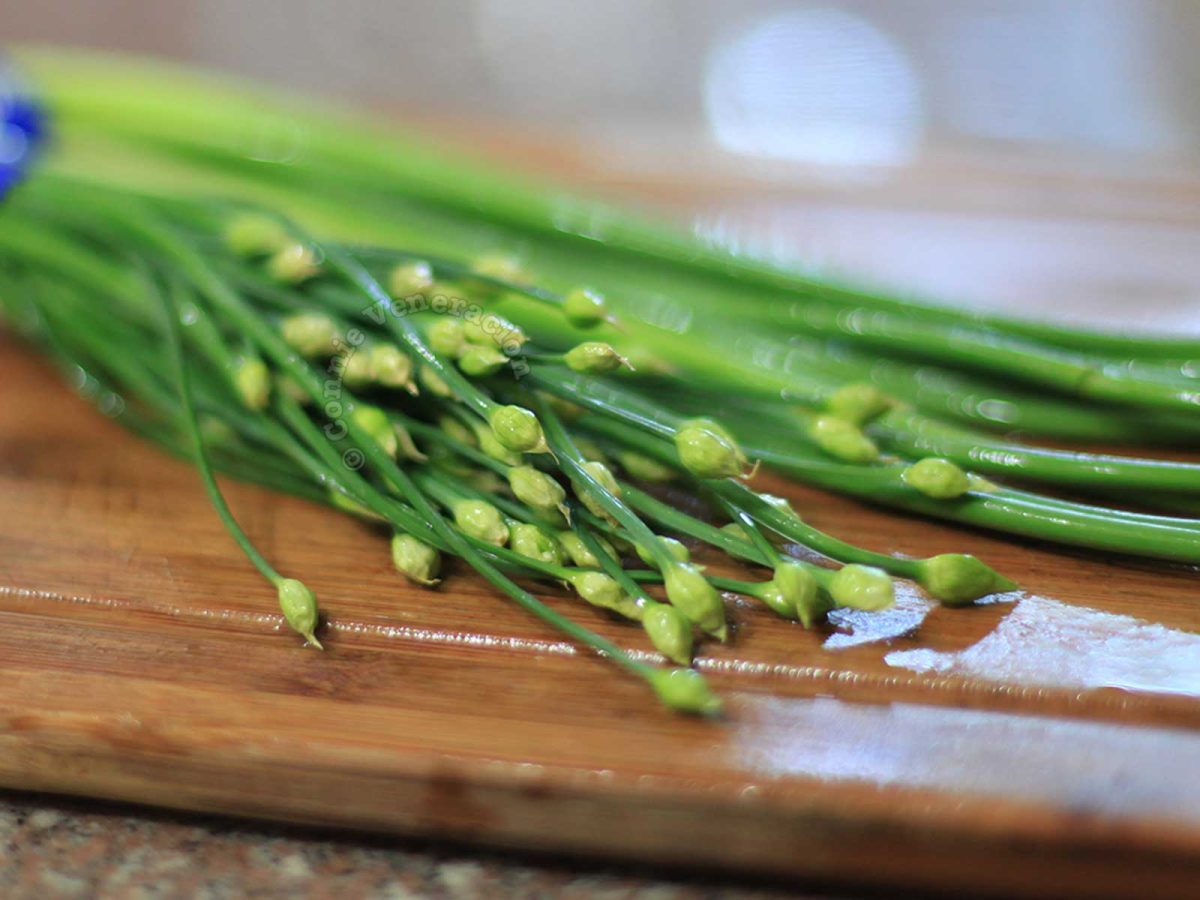
The Chinese have been growing and and cooking with garlic chives thousands of years. There are two main varieties:
- The flat-leaf gau choy which looks very similar to the Western chives; and
- The flowering gau choy fa which have thin and hollow stalks with buds at the tip.
Between the two, gau choy has a milder flavor.
What is garlic scape?
To understand garlic scapes, we need to start with the two types of garlic: hardneck and softneck. Hardnecks prefer colder climate; softnecks can survive in warmer climates.
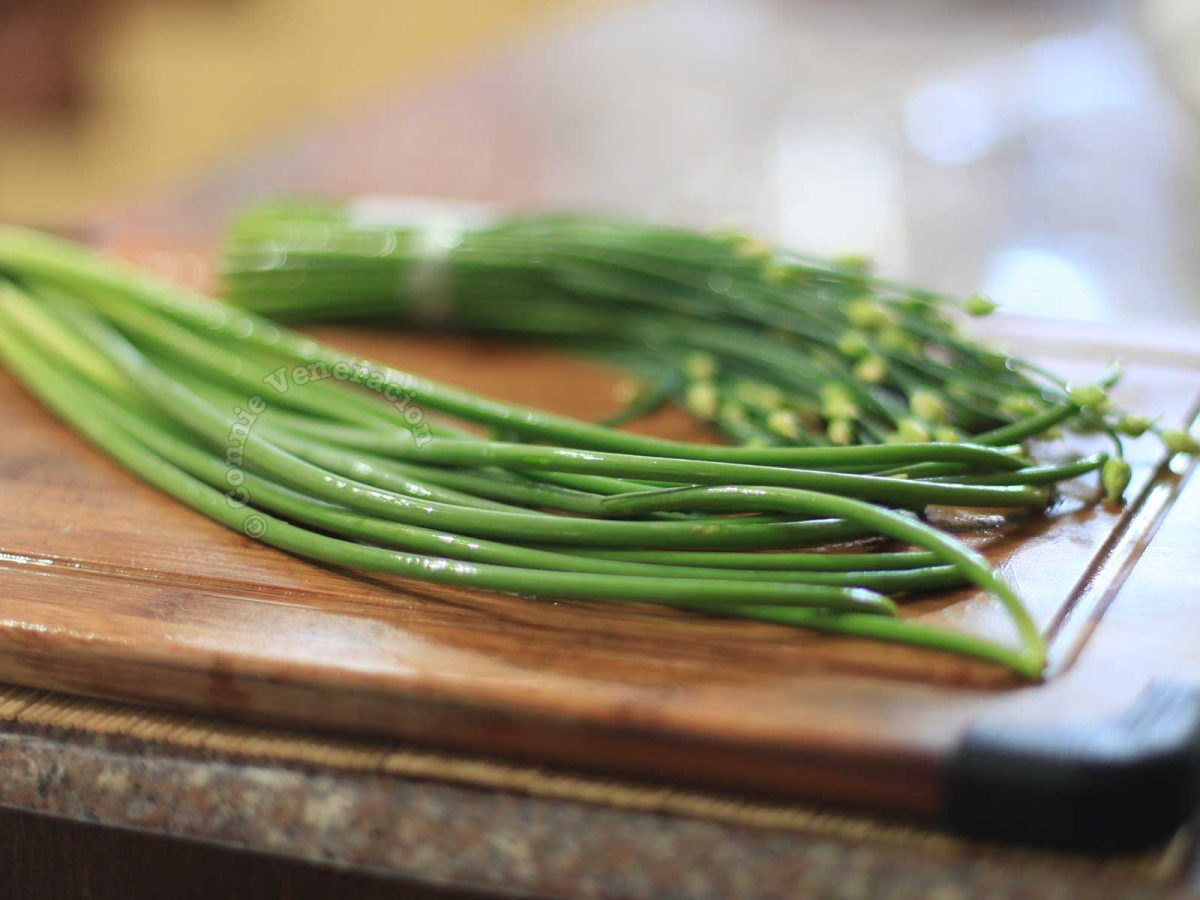
In physical appearance, the distinction between hardnecks and softnecks lies with the greens that sprout above the soil. With hardneck garlics, a tender stem shoots upward — straight at first then it curls as it grows longer. This is garlic scape.
Unlike the leaves of spring garlic which are real leaves (more on that in the next section), garlic scapes are stalks in the truest sense of the word. In appearance, they look like shorter and smoother yard-long beans. In texture, they are similar to asparagus. When cooked properly, they are lightly crisp and delicately flavored.
Garlic scapes are especially wonderful in stir fries. Instead of having to mince garlic and prepping greens, you just cut the garlic scapes into the desired length and you get the best of both worlds — substantial greens AND a delicate garlicky flavor.
What’s the difference between spring garlic and garlic scape?
Spring garlic is regular garlic harvested before the bulb is fully mature or, in some cases, before the bulb grows to any discernible shape. The immature bulb with the stalks can be added, cut or uncut, directly to soups and stews.

